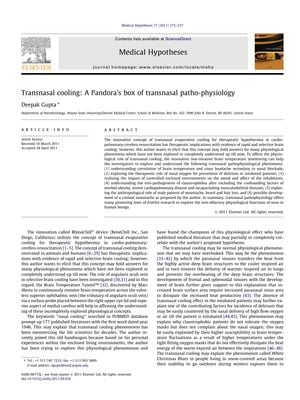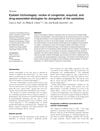Transnasal Cooling: A Pandora’s Box of Transnasal Pathophysiology
May 2011
in “
Medical Hypotheses
”

TLDR Transnasal cooling could reveal new insights into various physiological conditions and may be a natural way to transfer heat from the brain.
The document from August 1, 2011, explores the use of transnasal evaporative cooling, specifically with the RhinoChill® device, for inducing therapeutic hypothermia during cardio-pulmonary-cerebro-resuscitation, which has been effective in achieving rapid and selective brain cooling. The author posits that this cooling method could offer insights into a range of physiological phenomena that are not fully understood, such as the relationship between brain temperature and sinus headaches, the prevention of delirium with nasal oxygen, the influence of controlled environments on mood, the origins of claustrophobia, the anthropological significance of male facial hair patterns, and the concept of a coolant moustache. The paper suggests that transnasal cooling might be a natural physiological mechanism for heat transfer from the brain to inhaled air, potentially providing a new perspective on conditions like claustrophobia, seasonal depression, and male pattern hair loss. The author highlights the importance of non-invasive brain temperature monitoring in further investigating these transnasal pathophysiological concepts.



